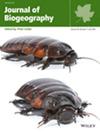Long-Term Human Land-Use Change Throughout Southeast Asia Reshapes the Distribution of Suitable Habitat for a Human-Commensal Bird Species
Abstract
Aim
Human activity has reshaped ecological communities for thousands of years. While these activities have typically led to habitat loss, some species have successfully exploited human environments. However, the effects of long-term human land-use on the distributions of such species are poorly understood. Here, we investigated how land-use change over the last 12,000 years has altered habitat distributions for a widespread human-commensal bird, the Pacific swallow (Hirundo tahitica).
Location
Southeast Asia, Melanesia.
Methods
We assessed habitat availability for Pacific swallows using citizen science-based occurrence records and species distribution models that included (a) only climate data, (b) only land-use data and (c) both variable sets combined. We evaluated approaches to address the unique spatial biases that arise in unstructured survey data of human-associated species and determined which models performed best with present-day occurrence records. We then hindcasted alternative models at 1000-year intervals over 12,000 years to evaluate the relative effects of climate and human land-use on long-term habitat availability.
Results
Models that included both climate and human land-use variables were the best fit to occurrence records. Standard methods for controlling for spatial bias performed poorly compared with fully sampling the environmental background, highlighting unique considerations for modelling human-associated species. Hindcasting showed that while climate-only models predicted little change in habitat availability over time, combined models showed habitat increases beginning more than 5000 years ago and significant expansions of habitat over the last 2000 years.
Main Conclusions
Human land-use over the last several thousand years has likely provided Pacific swallows with substantial new habitat, which may have led to population size expansions. Incorporating long-term human land-use into species distribution models offers insights into when associations with human environments may have arisen and generates testable predictions for how populations respond and adapt to human land-use change over millennial timescales.


 求助内容:
求助内容: 应助结果提醒方式:
应助结果提醒方式:


